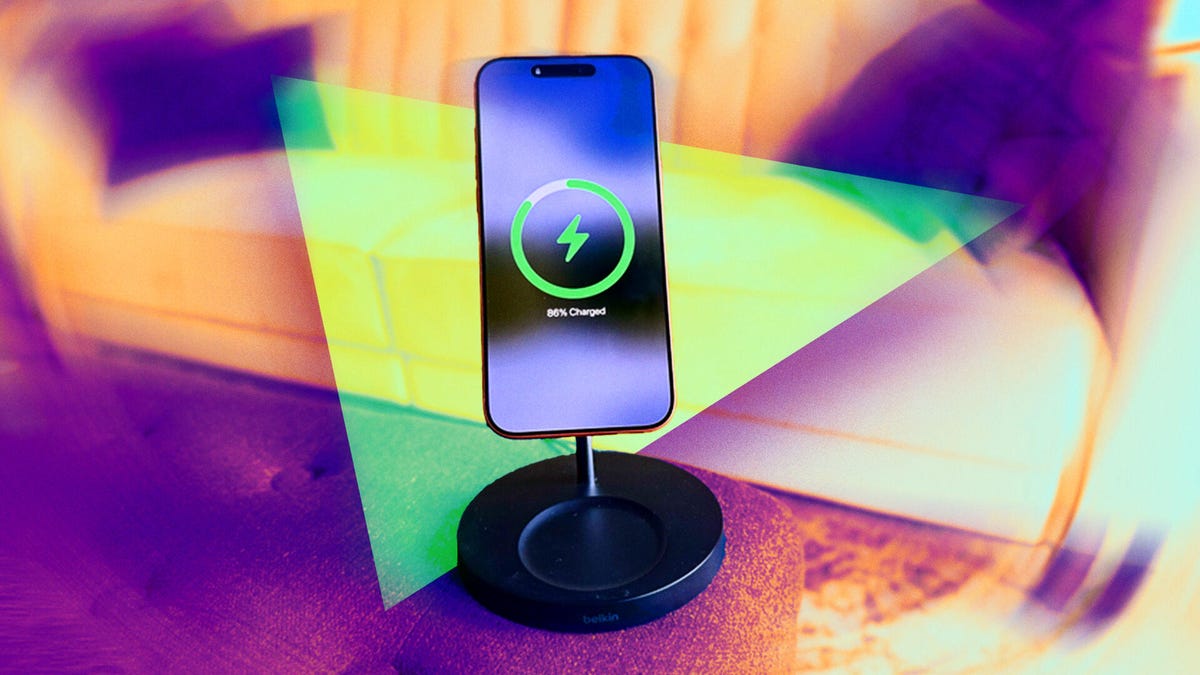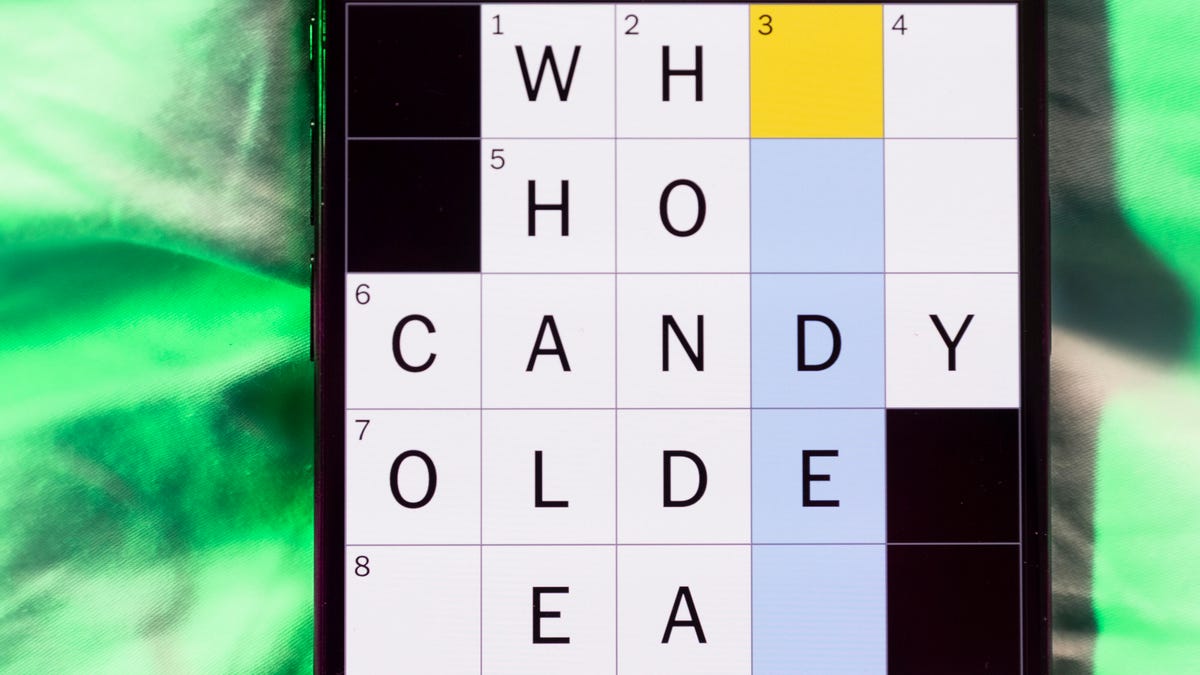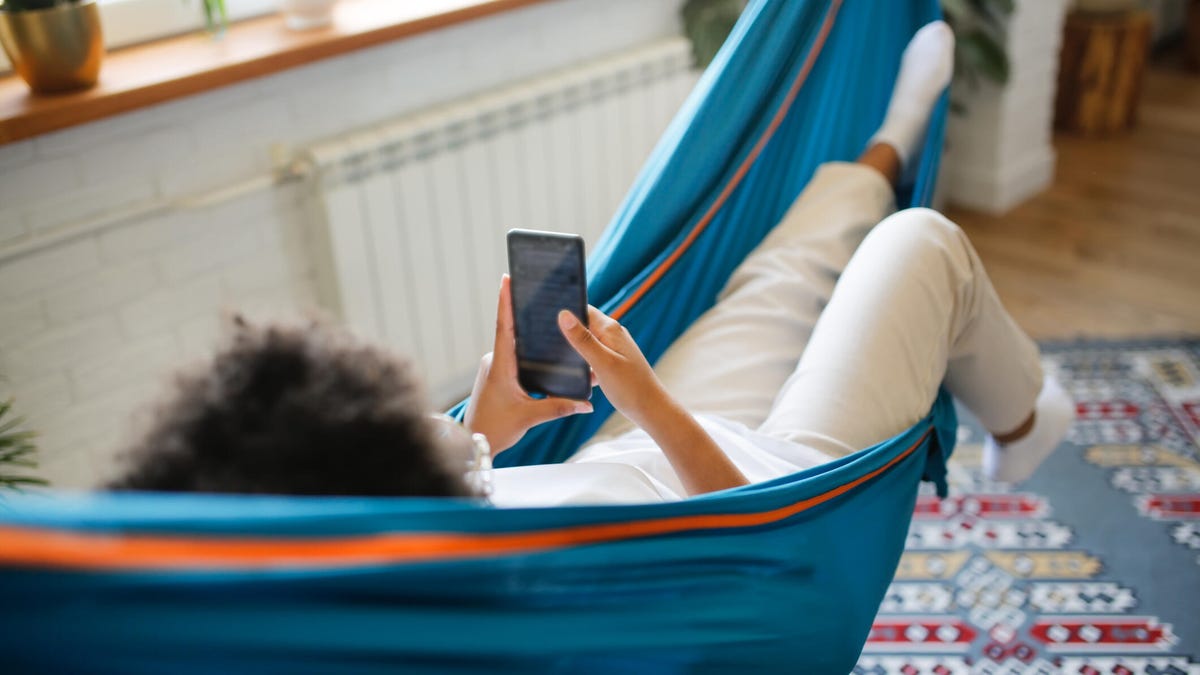Technologies
iPhone 17 vs. iPhone Air Battery Test Showdown: I Just Crowned A New Winner
I’ve got exclusive CNET data for three years of iPhone models. See how the latest phones rank historically.

Key takeaways:
- The iPhone 17 Pro Max has outstanding battery life that easily lasts all day with charge to spare.
- Our exclusive lab data shows you don’t need to pay over a grand for excellent battery life. The $829 iPhone 17’s battery lasts just as long as the $1,099 iPhone 17 Pro.
- The ultrathin iPhone Air, with a modest battery capacity, outlasted Samsung’s premium Galaxy S25 phones.
I’ve been reviewing smartphones at CNET for nearly a decade. If there’s one feature people consistently want in a new iPhone or Android phone, it’s longer battery life.
When Apple launched the new iPhone 17 series and iPhone Air, it spent considerable time touting the longer battery life of the iPhone 17, 17 Pro, and 17 Pro Max, as compared to their predecessors.
My fellow CNET reviewers and I have now had the chance to test those claims.
When introducing the iPhone Air and its super slim design, Apple showed a slide during its keynote stating that it has all-day battery life. However, the company undercut its claim on the next slide when it announced a new MagSafe battery pack designed for the Air, which fed into fears that a thinner design might indicate a significant sacrifice to battery life.
Your phone’s battery life is affected by multiple variables, like how bright you keep your display or if your phone has a weak signal from your carrier. How you use your phone has a big impact, too. Someone who is obsessively online will have a much different experience with their battery life than someone who has their phone in their bag at work and checks it on breaks.
So, how do you know whether the battery life is good on the iPhone Air and iPhone 17 series?
CNET tested the new Apple phones’ battery life three ways: through an anecdotal stress test, a video streaming test and observing battery life after everyday use. We also tested wired and wireless charging. Our lab data showed strong battery life for the iPhone 17, 17 Pro, 17 Pro Max and even the Air, especially compared to older iPhone models.
The iPhone 17 Pro Max has excellent battery life
Bigger batteries don’t always mean superior battery life. There’s more to battery life than the physical size or capacity. Besides Huawei, Apple is the only major smartphone maker that builds its own hardware and software and can tune its phones to work off smaller batteries than most Android phones have.
The iPhone 17 Pro and 17 Pro Max have larger batteries than last year’s 16 Pro and 16 Pro Max. If you’re using an eSIM-only version of either phone, like the iPhone models sold in the US, your battery is even bigger because it takes up the space where the SIM card tray would be.
Frustratingly, Apple doesn’t share the capacity of the iPhone’s batteries, and part of the reason is that its batteries are often smaller than those in Android phones. Fortunately, the EU requires that Apple publish energy labels that include the capacity of its batteries on its site. Macrumors found the capacities for eSIM-only models. You can see how the new phones’ batteries compare to the ones in the iPhone 16 series:
- iPhone Air: 3,149 mAh
- iPhone 17: 3,692 mAh
- iPhone 17 Pro: 4,252 mAh
- iPhone 17 Pro Max: 5,088 mAh
- iPhone 16: 3,561 mAh
- iPhone 16 Plus: 4,674 mAh
- iPhone 16 Pro: 3,582 mAh
- iPhone 16 Pro Max: 4,685 mAh
CNET has two benchmark tests (video streaming and stress tests) that allow us to compare the battery performance of one phone against another. And because we’ve been using these tests for years, we can also compare a new phone against older models.
For example, if you have an iPhone 15 and are considering upgrading to an iPhone 17, we can tell you that the new iPhone will have a longer battery life out of the box than your old one.
In CNET’s 3-hour video battery test, where we streamed a video over Wi-Fi with the screen at full brightness, the iPhone 17 series did terrific, even if the results were not dramatically better than the iPhone 16 series.
Without a Plus model this year, the iPhone 17 Pro Max is the only model with a big battery (the biggest one ever in an iPhone), and it only lost 9% in the test. The lower the percentage lost, the better. This is the first time an iPhone stayed in single digits, and I should note that the 17 Pro Max tied the Motorola Razr (2024) for the best score since we’ve been running the test. The Razr has a less powerful processor and a smaller main screen with a lower resolution and less brightness.
The iPhone Air and 17 Pro dropped 15% in the test, the same as the iPhone 15. And the iPhone 17 lost only 11%, better than the iPhone 15 and 16.
Something to keep in mind is that the iPhone 17 has a 6.3-inch screen that supports a 1-120Hz variable refresh rate and a max brightness of 3,000 nits, compared to the iPhone 15 and 16, which have a 6.1-inch display with a 60Hz refresh rate and a max brightness of 2,000 nits.
The new Apple phones did well in CNET’s 45-minute endurance test, during which I played games, streamed videos, scrolled social media and took a video call. The 17 Pro Max only dropped a single percent, the best result this year, but behind the iPhone 16 Plus, which stayed at 100% (the best result for any phone).
The iPhone 17 and 17 Pro had the same result, dropping 2%, making the standard iPhone 17 look even more like an incredible value. The iPhone Air dropped 5%, which matches the iPhone 15 in the same test. For perspective, the Air did better in this test than the Samsung Galaxy S25 series and tied with the Motorola Razr Ultra.
The iPhone Air gets through a day
When we review phones, we set them up as our daily driver to use and test them like our personal phones. Real-world testing is often the best indicator of what a reader can expect to get from a phone.
I started each day with a full battery for the iPhone 17 Pro and 17 Pro Max and tracked how much battery I had throughout the day. I ended each day with plenty of battery left — even after shooting photos and videos or keeping the screen at full brightness while filming the review video. Below is a chart that shows how the iPhone 17 Pro Max’s battery performed for the first five days I had it.
Similarly, CNET senior technology reporter Abrar Al-Heeti highlights that the iPhone Air she reviewed regularly ends the day with about 20% to spare (after starting with a full battery). She said it would drop below 20% on heavier-use days by the time she was ready for bed.
«Impressively, the iPhone Air has consistently lasted all day over the last several weeks I’ve been using it,» Al-Heeti said. «But I’ve hardly had to touch that MagSafe battery pack to extend battery life during the day, which is reassuring.»
In our testing, a fully-charged MagSafe battery added 69% to the iPhone Air’s battery. When I asked her whether she’d recommend people buy the $99 MagSafe Battery for the Air, Al-Heeti said that she recommends it for someone who uses their phone often and doesn’t want to hunt for an outlet.
«I don’t like the idea of having to lug around an extra battery, no matter how thin or sleek it is, so I don’t tend to carry it with me unless I know I’m going to have a long day away from home,» Al-Heeti said.
She also reviewed the standard iPhone 17 and said it can easily last a little over a day, even after snapping photos, scrolling through social media, listening to audiobooks and music, texting and watching videos.
Al-Heeti’s review notes that over several days, she’d start with a full battery, between 8:30 and 9:30 a.m., and have 44% to 47% of a charge 12 hours later. If she didn’t recharge the iPhone 17 overnight, she’d still have about 30% to spare the next morning.
The iPhone 17 series charges fast
There are two ways to charge an iPhone: with a cable or with MagSafe (unless it’s the iPhone 16E, which doesn’t have MagSafe, just Qi charging). For wired charging, Apple recommends using a 40W charger with the iPhone 17, 17 Pro and 17 Pro Max and a 20W charger for the iPhone Air. However, Apple doesn’t include a charger in the box, just a USB-C cable, but the company does sell a 40W charger for $39 and a 20W charger for $19.
In our 30-minute wired charging test, the new phones, including the Air, did well. The iPhone 17, 17 Pro and 17 Pro Max added 10% or more than the iPhone 16, 16 Pro and 16 Pro Max in the same test. Apple says the 17 Pro and 17 Pro Max can recharge to 50% in 20 minutes. In our tests, the iPhone 17 Pro hit 53% and the iPhone 17 Pro Max hit 49% after 20 minutes.
The iPhone Air reached 49% in our 30-minute charging test with a 20W adapter, the same as the iPhone 16 and iPhone 15 Pro, beating the iPhone 15 Plus.
In wireless charging or MagSafe charging, we ran a 30-minute test with the latest MagSafe charger and a 30W power adapter. The iPhone 17 series and Air beat every iPhone we’ve ever tested except the iPhone 16 Pro, which did better than the Air and standard iPhone 17. I should note that iPhones don’t come with a MagSafe charger or 30W adapter in the box.
Which iPhone should you buy based on CNET Labs data?
Get the iPhone 17 Pro Max if you want the best battery life. The standard iPhone 17 has great battery life and inches out the more expensive iPhone 17 Pro. And if you’re on Team Air, know that the battery life isn’t great, but depending on how hard you use it, you should get through a day on a single charge.
I should also note that iOS 26 has a new Adaptive Power mode. This feature learns your phone’s use patterns and «adapts» how much power the processor uses for specific tasks, so it draws less from the battery. The new feature takes a week to start working. I turned it on after running CNET’s battery tests and will update this story with any changes or improvements that come from it.
Last, if you have an iPhone and the only issue is that its battery doesn’t charge as much as it used to, think about replacing it with a new one. Doing so will not only be hundreds of dollars cheaper than a new iPhone, but it can extend your phone’s life another couple of years.
Technologies
Today’s NYT Mini Crossword Answers for Tuesday, Oct. 14
Here are the answers for The New York Times Mini Crossword for Oct. 14.

Looking for the most recent Mini Crossword answer? Click here for today’s Mini Crossword hints, as well as our daily answers and hints for The New York Times Wordle, Strands, Connections and Connections: Sports Edition puzzles.
Today’s Mini Crossword has an odd vertical shape, with an extra Across clue, and only four Down clues. The clues are not terribly difficult, but one or two could be tricky. Read on if you need the answers. And if you could use some hints and guidance for daily solving, check out our Mini Crossword tips.
If you’re looking for today’s Wordle, Connections, Connections: Sports Edition and Strands answers, you can visit CNET’s NYT puzzle hints page.
Read more: Tips and Tricks for Solving The New York Times Mini Crossword
Let’s get to those Mini Crossword clues and answers.
Mini across clues and answers
1A clue: Smokes, informally
Answer: CIGS
5A clue: «Don’t have ___, man!» (Bart Simpson catchphrase)
Answer: ACOW
6A clue: What the vehicle in «lane one» of this crossword is winning?
Answer: RACE
7A clue: Pitt of Hollywood
Answer: BRAD
8A clue: «Yeah, whatever»
Answer: SURE
9A clue: Rd. crossers
Answer: STS
Mini down clues and answers
1D clue: Things to «load» before a marathon
Answer: CARBS
2D clue: Mythical figure who inspired the idiom «fly too close to the sun»
Answer: ICARUS
3D clue: Zoomer around a small track
Answer: GOCART
4D clue: Neighbors of Norwegians
Answer: SWEDES
Technologies
Watch SpaceX’s Starship Flight Test 11
Technologies
New California Law Wants Companion Chatbots to Tell Kids to Take Breaks
Gov. Gavin Newsom signed the new requirements on AI companions into law on Monday.

AI companion chatbots will have to remind users in California that they’re not human under a new law signed Monday by Gov. Gavin Newsom.
The law, SB 243, also requires companion chatbot companies to maintain protocols for identifying and addressing cases in which users express suicidal ideation or self-harm. For users under 18, chatbots will have to provide a notification at least every three hours that reminds users to take a break and that the bot is not human.
It’s one of several bills Newsom has signed in recent weeks dealing with social media, artificial intelligence and other consumer technology issues. Another bill signed Monday, AB 56, requires warning labels on social media platforms, similar to those required for tobacco products. Last week, Newsom signed measures requiring internet browsers to make it easy for people to tell websites they don’t want them to sell their data and banning loud advertisements on streaming platforms.
AI companion chatbots have drawn particular scrutiny from lawmakers and regulators in recent months. The Federal Trade Commission launched an investigation into several companies in response to complaints by consumer groups and parents that the bots were harming children’s mental health. OpenAI introduced new parental controls and other guardrails in its popular ChatGPT platform after the company was sued by parents who allege ChatGPT contributed to their teen son’s suicide.
«We’ve seen some truly horrific and tragic examples of young people harmed by unregulated tech, and we won’t stand by while companies continue without necessary limits and accountability,» Newsom said in a statement.
Don’t miss any of our unbiased tech content and lab-based reviews. Add CNET as a preferred Google source.
One AI companion developer, Replika, told CNET that it already has protocols to detect self-harm as required by the new law, and that it is working with regulators and others to comply with requirements and protect consumers.
«As one of the pioneers in AI companionship, we recognize our profound responsibility to lead on safety,» Replika’s Minju Song said in an emailed statement. Song said Replika uses content-filtering systems, community guidelines and safety systems that refer users to crisis resources when needed.
Read more: Using AI as a Therapist? Why Professionals Say You Should Think Again
A Character.ai spokesperson said the company «welcomes working with regulators and lawmakers as they develop regulations and legislation for this emerging space, and will comply with laws, including SB 243.» OpenAI spokesperson Jamie Radice called the bill a «meaningful move forward» for AI safety. «By setting clear guardrails, California is helping shape a more responsible approach to AI development and deployment across the country,» Radice said in an email.
One bill Newsom has yet to sign, AB 1064, would go further by prohibiting developers from making companion chatbots available to children unless the AI companion is «not foreseeably capable of» encouraging harmful activities or engaging in sexually explicit interactions, among other things.
-

 Technologies3 года ago
Technologies3 года agoTech Companies Need to Be Held Accountable for Security, Experts Say
-

 Technologies3 года ago
Technologies3 года agoBest Handheld Game Console in 2023
-

 Technologies3 года ago
Technologies3 года agoTighten Up Your VR Game With the Best Head Straps for Quest 2
-

 Technologies4 года ago
Technologies4 года agoVerum, Wickr and Threema: next generation secured messengers
-

 Technologies4 года ago
Technologies4 года agoGoogle to require vaccinations as Silicon Valley rethinks return-to-office policies
-

 Technologies4 года ago
Technologies4 года agoBlack Friday 2021: The best deals on TVs, headphones, kitchenware, and more
-

 Technologies4 года ago
Technologies4 года agoOlivia Harlan Dekker for Verum Messenger
-

 Technologies4 года ago
Technologies4 года agoiPhone 13 event: How to watch Apple’s big announcement tomorrow
